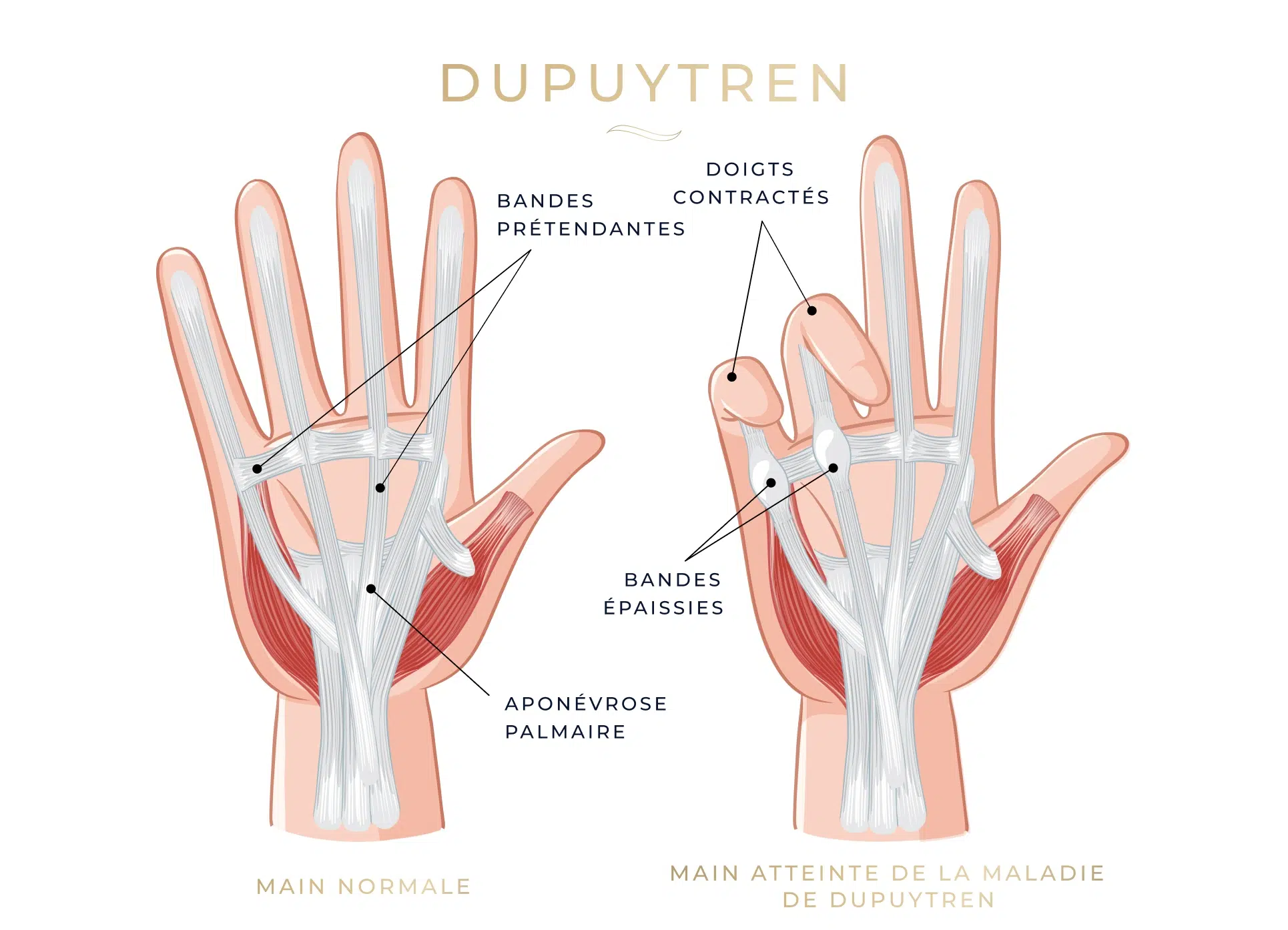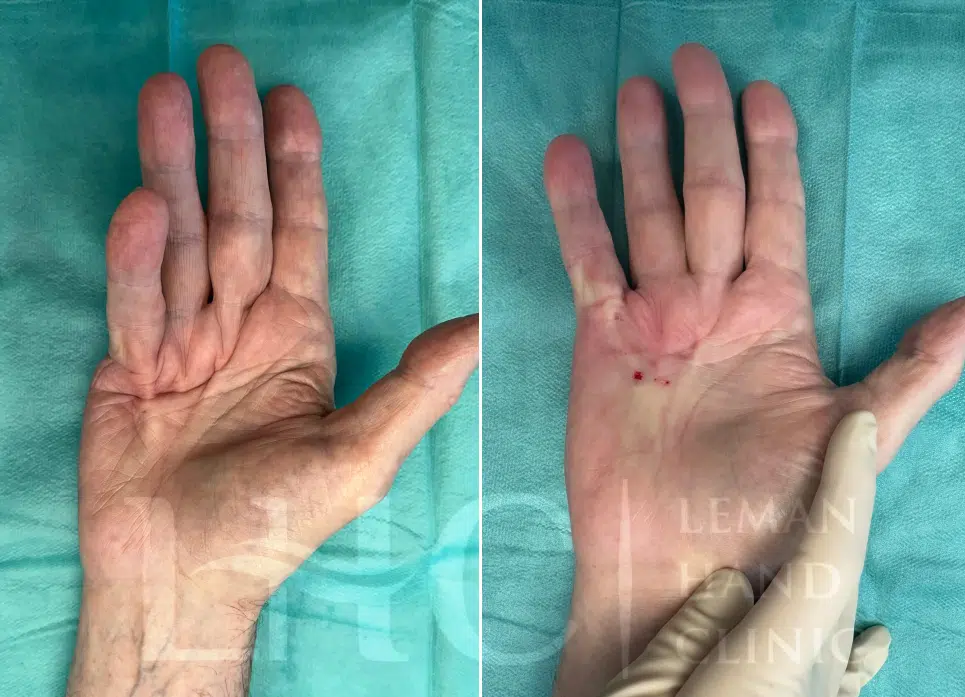Surgical treatment is considered when the contracture significantly affects hand function, notably when the patient can no longer place the hand flat. Since Dupuytren’s disease is hereditary, there is a risk of recurrence after surgery (40-60%) and of progression of the disease to other fingers. Surgical options include fasciotomy and fasciectomy.
Fasciotomy
Fasciotomy involves cutting the contracted cord under the skin with a scalpel or needle, under a mild local anaesthetic. This technique is less invasive and enables rapid recovery. However, it does not remove the diseased tissue, which means the risk of recurrence is very high. This procedure is reserved for certain forms of fibrous cords only.

